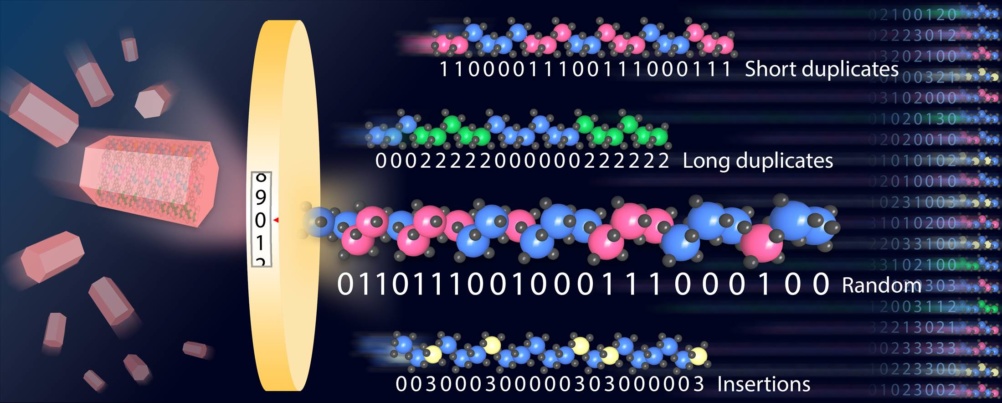Researchers in the US and Germany have taken a step towards the vision of developing programmable synthetic materials that could form the basis of a new type of computer.

Artificial molecules - in which information is encoded in the spatial arrangement of the individual atoms - are thought to hold promise for a new generation of for programmable substances, but until now researchers have struggled to find a way to accurately read these encoded arrangements.
Writing in the journal Science, a group made up of researchers from the University of California, Berkeley, and Ruhr-Universität Bochum (RUB) in Germany showed that atom probe tomography (APT) can be used to read a complex spatial arrangement of metal ions in multivariate metal-organic frameworks.
Metal-organic frameworks (MOFs) are crystalline porous networks of multi-metal nodes linked together by organic units to form a well-defined structure. To encode information using a sequence of metals, it is essential to be first able to read the metal arrangement.
The researchers chose MOF-74, made at the University of Berkeley in 2005, as an object of interest. They designed the MOFs with mixed combinations of cobalt, cadmium, lead, and manganese, and then decrypted their spatial structure using APT.
The team claims that MOFs could ultimately form the basis of programmable chemical molecules: for instance, an MOF could be programmed to introduce an active pharmaceutical ingredient into the body to target infected cells and then break down the active ingredient into harmless substances once it is no longer needed. Or MOFs could be programmed to release different drugs at different times. They could also be used to capture CO2 and, at the same time, convert the CO2 into a useful raw material for the chemical industry.
“In the long term, such structures with programmed atomic sequences can completely change our way of thinking about material synthesis,” said the authors of the Science paper. “The synthetic world could reach a whole new level of precision and sophistication that has previously been reserved for biology.”




April 1886: the Brunkebergs tunnel
First ever example of a ground source heat pump?